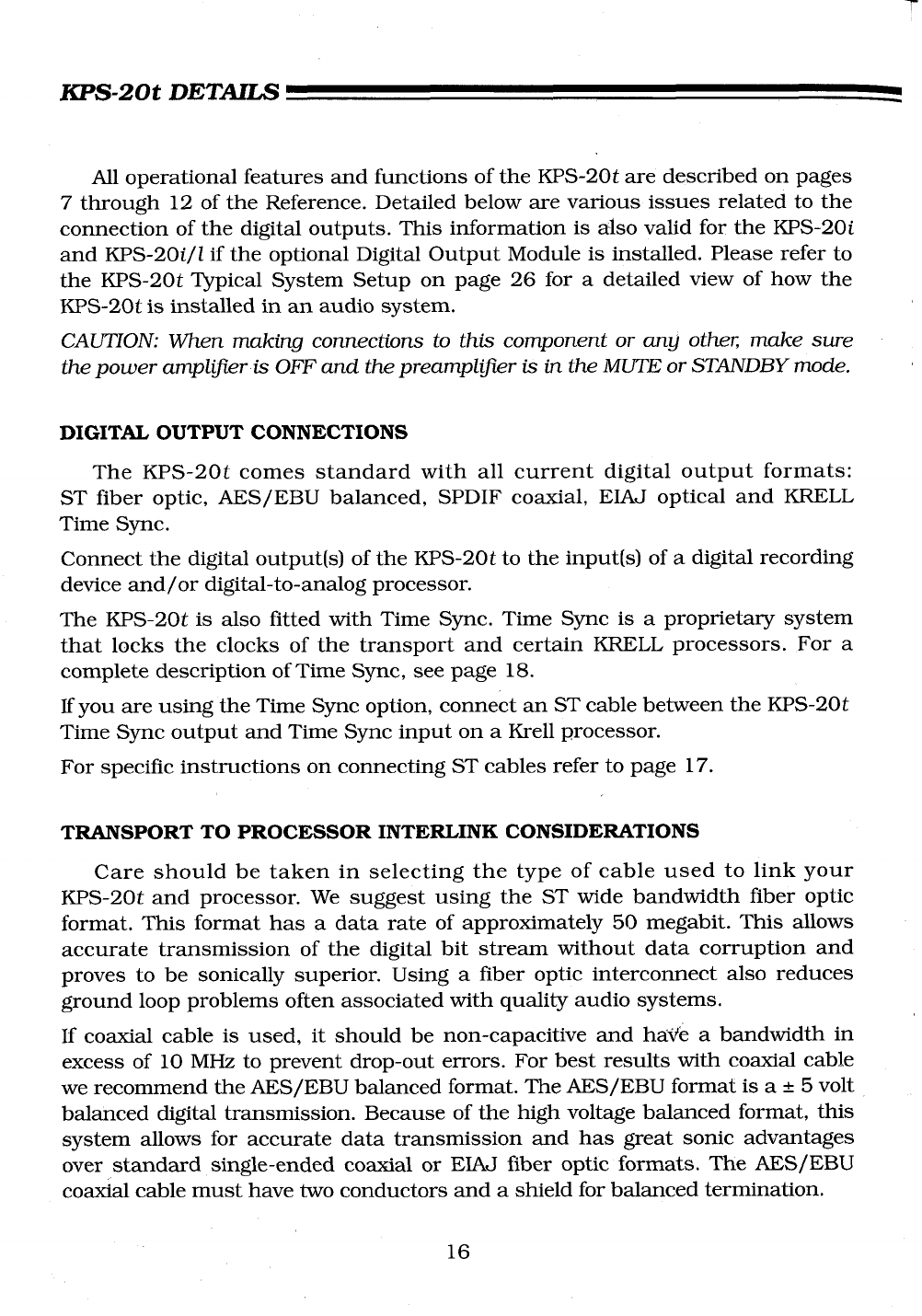
KPS-20t DETAILS
All operational features and functions of the KPS-20t are described on pages
7 through 12 of the Reference. Detailed below are various issues related to the
connection of the digital outputs. This information is also valid for the KPS-20i
and KPS-20i/I if the optional Digital Output Module is installed. Please refer to
the KPS-20t Typical System Setup on page 26 for a detailed view of how the
KPS-20t is installed in an audio system.
CAUTION: When making connections to this component or any other, make sure
the power amplifier is OFF and the preamplifier is in the MUTE or STANDBY mode.
DIGITAL OUTPUT CONNECTIONS
The KPS-20t comes standard with all current digital output formats:
ST fiber optic, AES/EBU balanced, SPDIF coaxial, EIAJ optical and KRELL
Time Sync.
Connect the digital output(s) of the KPS-20t to the input(s) of a digital recording
device and/or digital-to-analog processor.
The KPS-20t is also fitted with Time Sync. Time Sync is a proprietary system
that locks the clocks of the transport and certain KRELL processors. For a
complete description of Time Sync, see page 18.
If you are using the Time Sync option, connect an ST cable between the KPS-20t
Time Sync output and Time Sync input on a Krell processor.
For specific instructions on connecting ST cables refer to page 17.
TRANSPORT TO PROCESSOR INTERLINK CONSIDERATIONS
Care should be taken in selecting the type of cable used to link your
KPS-20t and processor. We suggest using the ST wide bandwidth fiber optic
format. This format has a data rate of approximately 50 megabit. This allows
accurate transmission of the digital bit stream without data corruption and
proves to be sonically superior. Using a fiber optic interconnect also reduces
ground loop problems often associated with quality audio systems.
If coaxial cable is used, it should be non-capacitive and have a bandwidth in
excess of 10 MHz to prevent drop-out errors. For best results with coaxial cable
we recommend the AES/EBU balanced format. The AES/EBU format is a _+ 5 volt
balanced digital transmission. Because of the high voltage balanced format, this
system allows for accurate data transmission and has great sonic advantages
over standard single-ended coaxial or EIAJ fiber optic formats. The AES/EBU
coaxial cable must have two conductors and a shield for balanced termination.
16


















